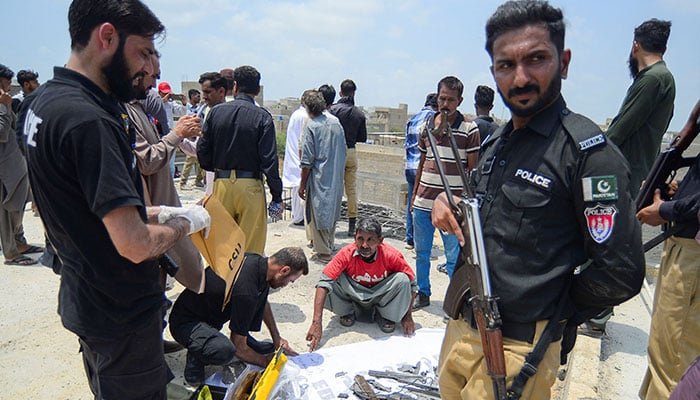In a landmark achievement, Balochistan has unveiled its first-ever surplus budget for the fiscal year 2025–26, totalling Rs. 1,028 billion. This historic move reflects a significant shift in the province’s financial management, highlighting improved fiscal discipline and a commitment to sustainable development. The surplus budget not only underscores Balochistan’s economic resilience but also sets a precedent for other provinces in Pakistan.
Key Highlights of the 2025–26 Balochistan Budget
-
Total Budget Allocation: Rs. 1,028 billion, with a surplus of Rs. 36.5 billion.
-
Revenue Generation: Provincial revenue estimated at Rs. 801 billion, including Rs. 101 billion from own sources and Rs. 104.5 billion from federal and foreign assistance.
-
Non-Development Expenditure: Projected at Rs. 642 billion, focusing on administrative and operational costs.
-
Development Expenditure: Allocated Rs. 349 billion, encompassing the Provincial Public Sector Development Programme (PSDP), federal-assisted schemes, and foreign-assisted projects.
What Makes This Budget Historic?
Historically, Balochistan has faced budgetary deficits, often relying on federal assistance to meet its financial obligations. The 2025–26 surplus budget signifies a paradigm shift towards fiscal self-sufficiency. This achievement is attributed to enhanced revenue generation, prudent expenditure management, and a strategic focus on key sectors.
Allocation of Funds: Sector-Wise Overview
Education
-
Total Allocation: Rs. 175 billion.
-
Key Initiatives: Establishment of new schools, recruitment of teaching staff, and provision of scholarships.
-
Focus Areas: Improvement of educational infrastructure and accessibility in underserved regions.
Health
-
Total Allocation: Rs. 110 billion.
-
Key Initiatives: Upgrade of healthcare facilities, procurement of medical equipment, and recruitment of medical professionals.
-
Focus Areas: Enhancement of healthcare services in rural and remote areas.
Law and Order
-
Total Allocation: Rs. 100 billion.
-
Key Initiatives: Strengthening of police and levies forces, establishment of new police stations, and procurement of modern equipment.
-
Focus Areas: Enhancement of security and reduction of crime rates.
Agriculture
-
Total Allocation: Rs. 23.8 billion.
-
Key Initiatives: Development of irrigation systems, provision of subsidies to farmers, and promotion of sustainable agricultural practices.
-
Focus Areas: Boosting agricultural productivity and ensuring food security.
Infrastructure and Development
-
Total Allocation: Rs. 245 billion for PSDP.
-
Key Initiatives: Construction and rehabilitation of roads, bridges, and public buildings.
-
Focus Areas: Improvement of transportation and public infrastructure.
Government’s Strategy for Achieving a Surplus
The surplus budget was made possible through a combination of factors:
-
Increased Revenue Generation: Enhanced collection of provincial taxes and improved management of resources.
-
Prudent Expenditure Management: Streamlining of administrative costs and elimination of wasteful expenditures.
-
Strategic Investments: Focus on high-impact projects that promise long-term economic benefits.
Expert Reactions and Public Response
Economists and financial analysts have lauded Balochistan’s achievement, highlighting it as a model for fiscal discipline and governance. Public response has been overwhelmingly positive, with citizens expressing hope for improved public services and infrastructure.
Polygraph refusal might weaken Imran’s case: ATC judge
You Can Read This
Potential Challenges Ahead
Despite the surplus, Balochistan faces several challenges:
-
Security Concerns: Ongoing issues related to law and order in certain regions.
-
Infrastructure Gaps: Need for significant investment in transportation and energy sectors.
-
Human Capital Development: Requirement for skilled workforce to manage and sustain development projects.
Economic Impact and Long-Term Outlook
Balochistan’s surplus budget is expected to have a ripple effect across various sectors of its economy. With increased allocations for infrastructure, education, health, and agriculture, the province is aiming to create an enabling environment for sustainable economic growth. The Public Sector Development Programme (PSDP), which forms a major component of the development budget, is expected to generate thousands of jobs, both directly and indirectly.
Furthermore, the budget lays the foundation for attracting private investment. By investing in law and order and improving infrastructure, Balochistan is positioning itself as a safer, more stable region for business activity. Special Economic Zones (SEZs) and projects under the China-Pakistan Economic Corridor (CPEC) are also expected to benefit from better fiscal governance and timely project implementation.
Governance Reforms and Transparency Measures
A major highlight of this year’s budget is the emphasis on governance reforms. The government has announced that all PSDP projects will be subject to third-party monitoring, digital tracking systems, and public reporting dashboards. This is intended to ensure transparency and accountability in public spending, historically a weak point in provincial governance.
In addition, reforms in the tax collection system are being rolled out to enhance efficiency and curb leakages. The digitization of land records and revenue collection mechanisms will help plug financial loopholes and bring more economic activity into the formal sector.
Conclusion
Balochistan’s first-ever surplus budget of Rs. 1,028 billion marks a significant milestone in the province’s financial history. While challenges remain, the surplus budget demonstrates the province’s commitment to fiscal responsibility and sustainable development. With continued focus on key sectors and strategic investments, Balochistan is poised for a prosperous future.




